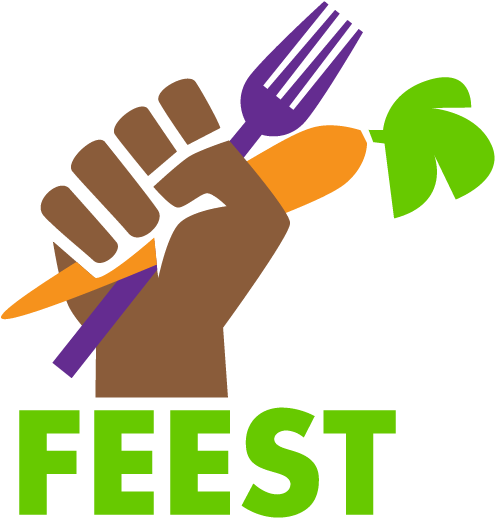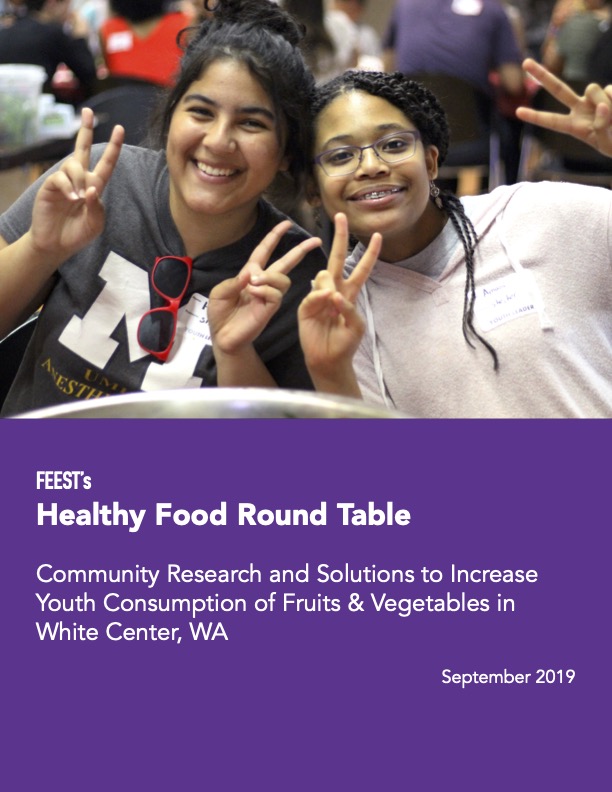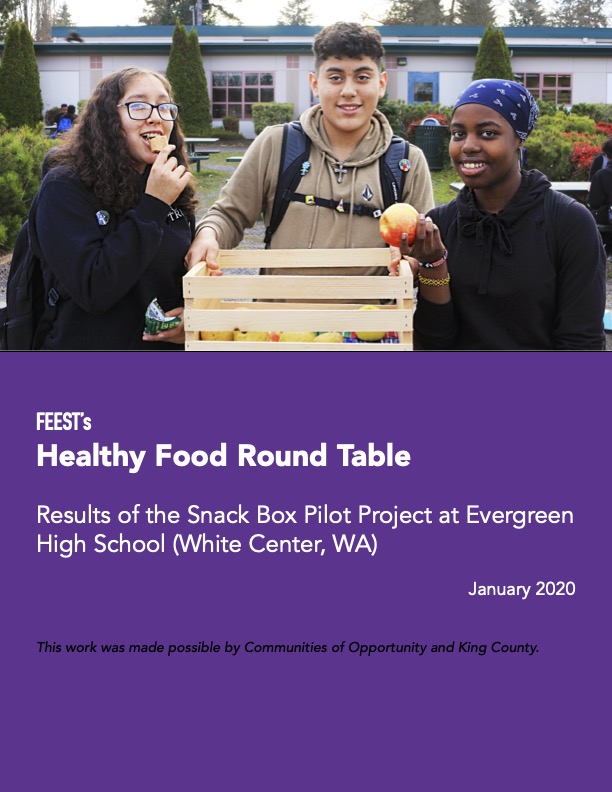Research
Learning from Our Community
Our research guides our work and powers our campaigns. We survey students and community members to learn their needs, then design projects and campaigns to help meet those needs. Our focus is on ensuring that young people have the food & nutrition, mental & emotional health resources, and the transformative justice resources they need to be successful and eliminate barriers for young people to live healthy lives.
The Healthy Food Round Table
In 2018, FEEST’s Healthy Food Round Table committee gathered feedback from over 320 community members in White Center, WA, and found that cost and distance/transportation were the biggest barriers for young people to access fresh and nutritious food in their neighborhood under food apartheid.
Based on this information, we are prioritizing schools as a place where students should be able to access fresh food. Our campaign focus on improving the quality of food served in schools so that students have the nutrition they need to be healthy and successful.
Healthy Snack Program
To address cost and distance as barriers to access to healthy food, FEEST conducted two pilot projects at Evergreen High School (White Center, WA) and Chief Sealth High School (Seattle, WA) providing free and nutritious snacks to students in school. The snacks were offered at the beginning of 6th period, the point in the day when students feel most hungry after lunch.
While slightly different in design, both projects produced tangible results, improving students’ ability to learn during 6th period by reducing hunger and improving focus.
Based on this research, we understand that access to free, nutritious food not only improved student health but also academics.
Evergreen High School:
In September 2018, FEEST organized an intergenerational group of community stakeholders called the Healthy Food Round Table (HFRT) Committee. The purpose of the group was to gather community feedback about the barriers youth in White Center face in accessing healthy food in their community and schools. From the community feedback gathered, the group was able to identify cost and distance as the top barriers to accessing fresh produce in White Center. Based on this feedback, the HFRT committee envisioned a short-term solution of implementing a free CSA-style snack box for students at Evergreen High School (EHS), the most populated school in White Center.
In September 2019, FEEST launched the Snack Box Pilot Project at Evergreen High School (EHS). Every Monday, all 6th-period classes received crates with enough fresh produce and nutritious fruit-based snack bars for each student to have one piece per day. Approximately 40 6th period classrooms, 850-950 students, were served by the Healthy Food Round Table (HFRT) pilot snack program. The snack boxes were created in partnership with Lee’s Produce, who supplied a rotation of fruits including Mandarin oranges, plums, Bartlett pears, Asian pears, persimmons, and apples, which rotated as the seasons changed.
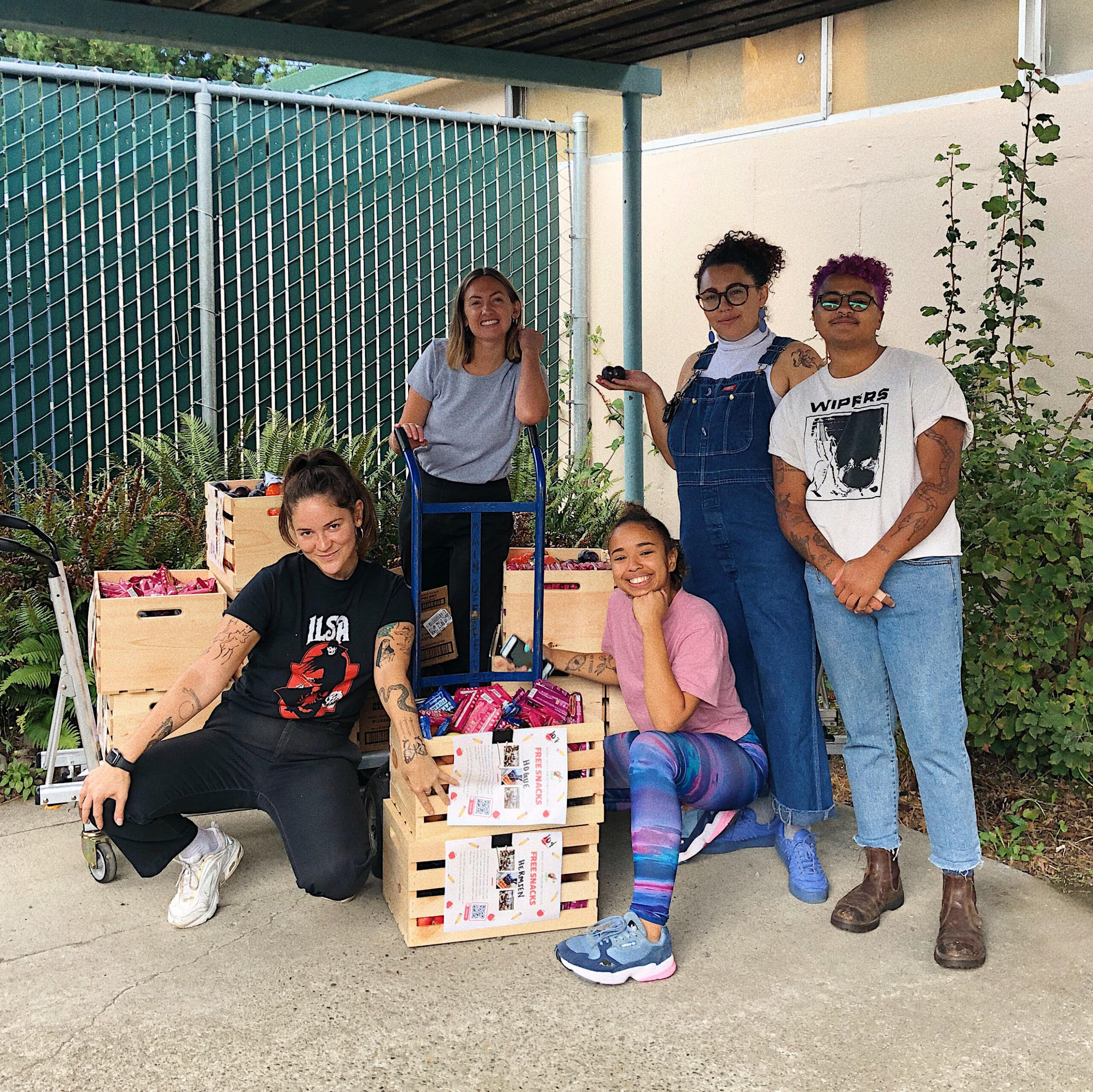
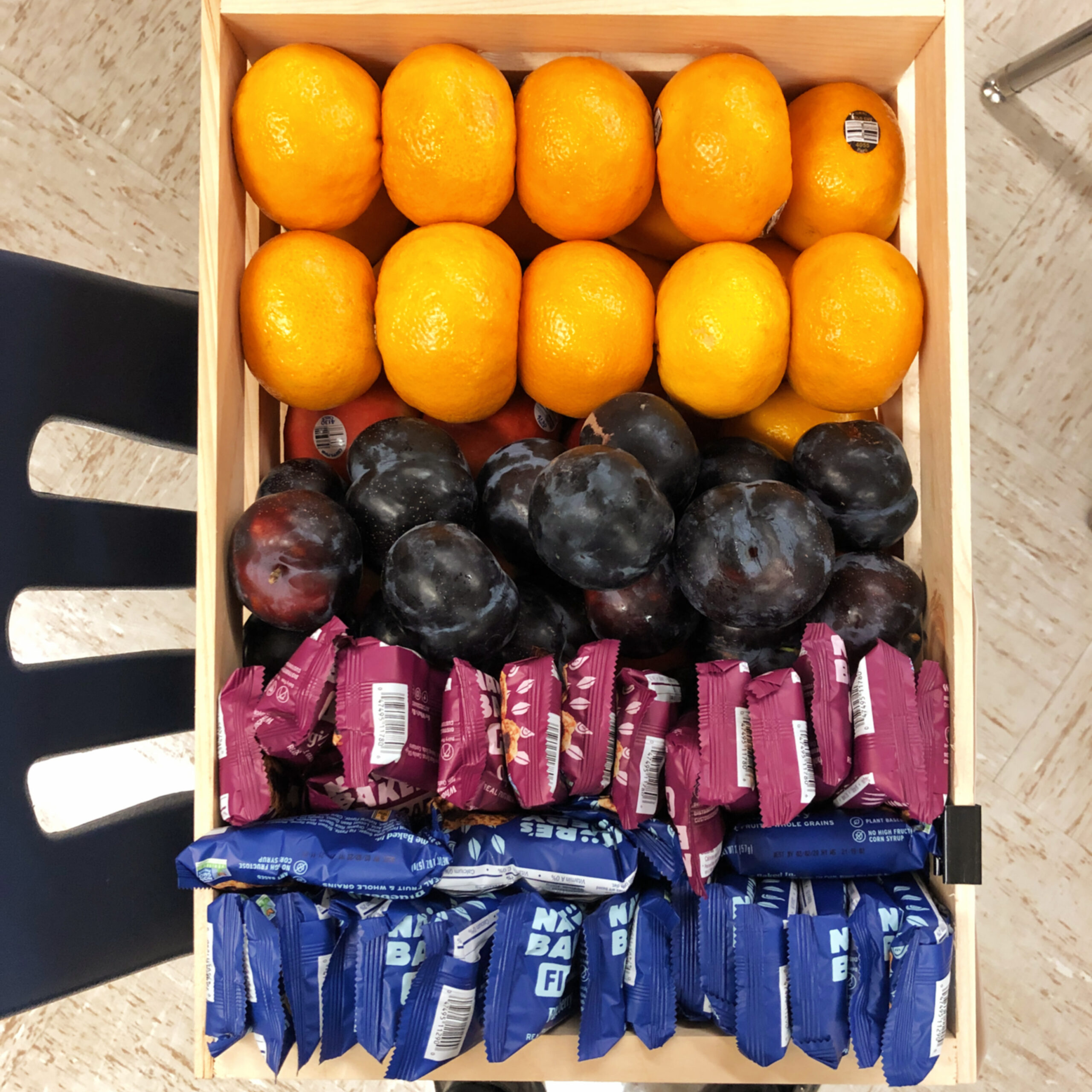
Chief Sealth High School
In 2019, FEEST youth leaders partnered with the City of Seattle Office of Sustainability and Environment to provide students access to more fresh and healthy snacks. FEEST youth leaders were recognized as an authority on student needs around school food, and were contracted to run focus groups with youth to generate 2-3 viable snack program ideas.
At focus groups at Chief Sealth International High School and Rainier Beach High School, FEEST youth leaders identified barriers to healthy eating at school, the time of day students are most in need of a snack, distribution methods that works best for their school, and the types of fruits, veggies, and healthy snacks students enjoy.
Focus group results showed a clear need for more fresh fruits and vegetables as well as culturally relevant foods that represent the diverse student body. By using the “hot spot” distribution method, snack boxes were distributed to students during the passing period between fifth and sixth period, a time of the day where students identified feeling most hungry after lunch. “Hot spots” were located around the campus in areas that would reach the most students. Students reported the snack box positively impacting their ability to learn in many ways. These included feeling an increase in focus, concentration, motivation, attendance, participation, and ability to remember information.
Students want better school food.
We surveyed over 650 students across Chief Sealth, Rainier Beach, Tyee, and Evergreen High Schools. The results were clear: 1 in 4 students do not eat school lunch, and most cited poor food quality as the reason. Students want to see change.
Based on what we heard from students, FEEST is organizing for these changes:
- Fresh food: All meals to be cooked on campus (not frozen) using, fresh, local ingredients
- Variety: More culturally relevant food on the menu, and more variety overall
- Affordable: School food should be free for all students
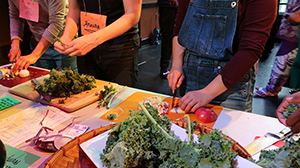
Healthy Snack Program Results
The goals of the program are to create healthier school environments by providing healthier food choices, expand the variety of fruits and vegetables youth experience, increase students’ fruit and vegetable consumption, and make a difference in young people’s diets to impact their present and future health. Read our Proposal and learn more about how FEEST and OSE’s partnership fostered this project and our in-depth analysis of the results we discovered!
Show FEEST some love!
Youth are in the lead at FEEST because we know that change is not effective unless those most impacted by health inequities are the decision makers. Support youth leadership by donating today, OR sign up for our newsletter to get the latest from FEEST!
